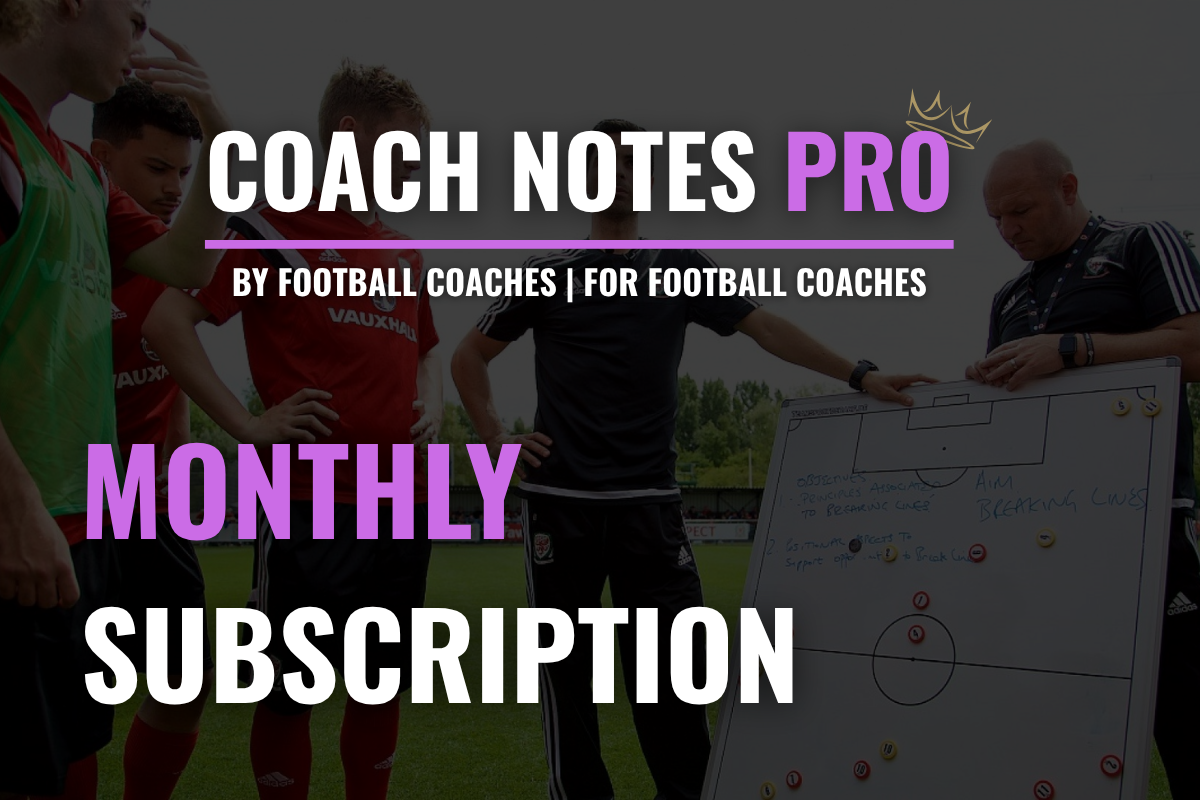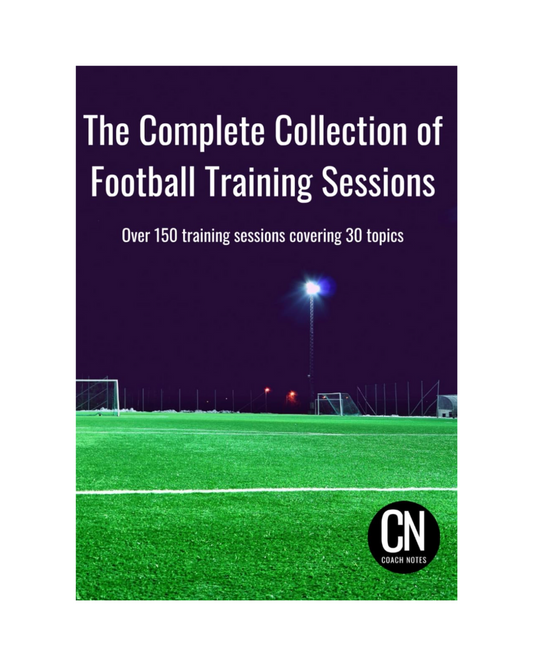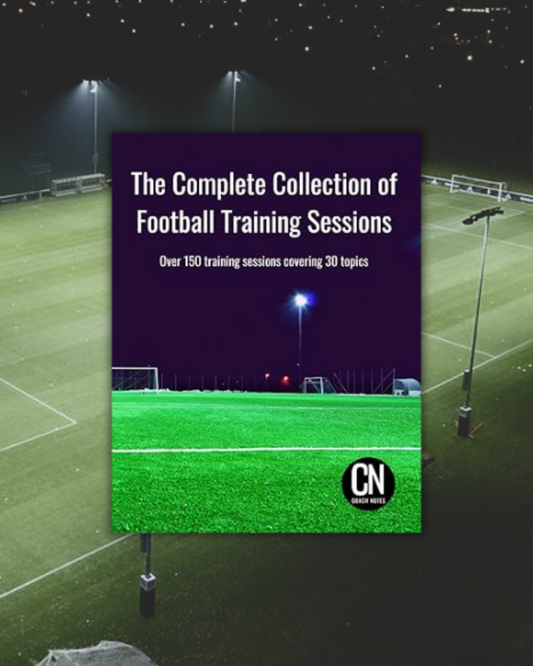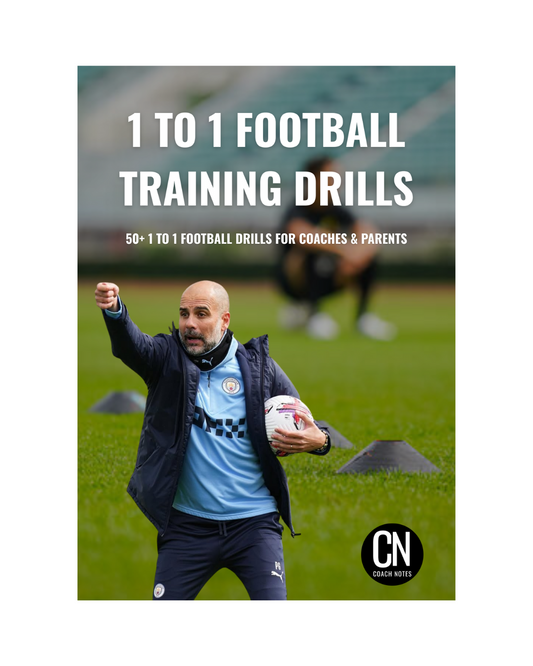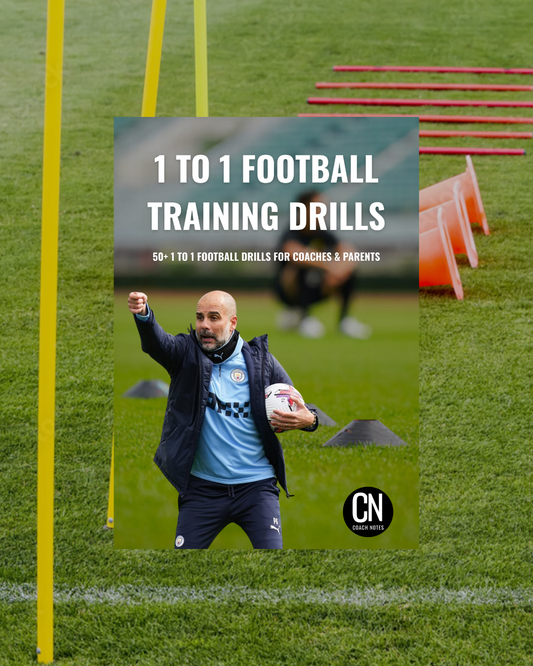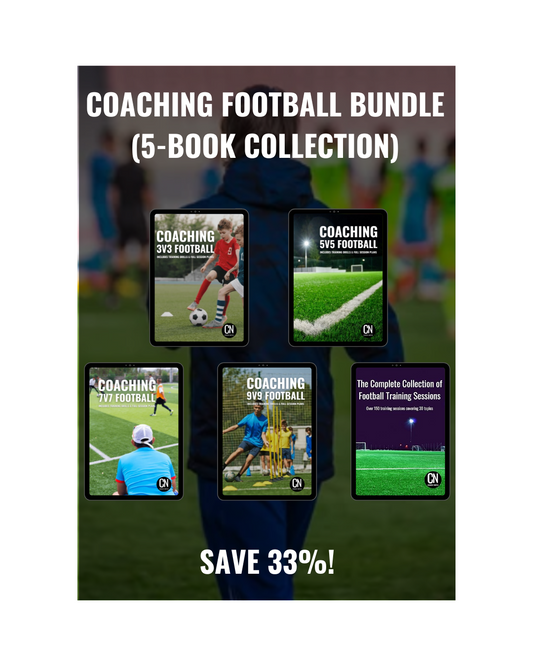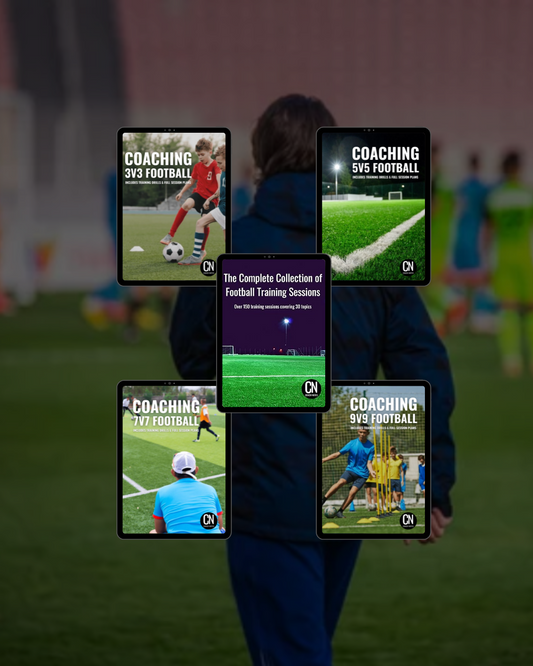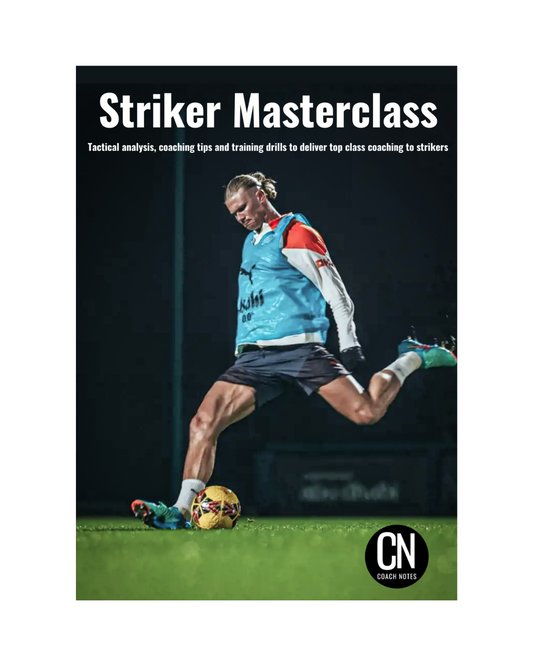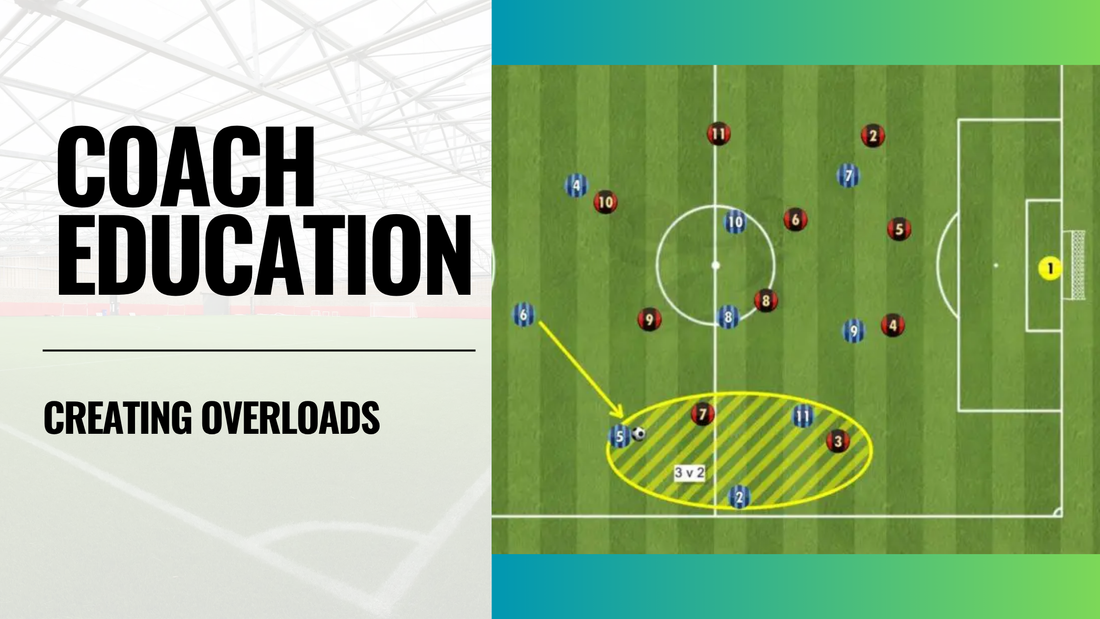
Creating Overloads
Share
Creating overloads is a fundamental tactical approach used to gain control of possession, unlock defences, and create goal scoring chances. Whether your team prioritises possession play or quick counter-attacks, understanding and applying overload principles can help you consistently outmanoeuvre opponents.
This article will explain what overloads are, how they can be created, and how to coach players to recognise and exploit them effectively.
🧩 What Are Overloads?
An overload occurs when a team deliberately creates a situation where they have more players than the opposition in a particular area of the pitch – typically resulting in a 2v1, 3v2, or even 4v3 advantage.
Overloads can be created in:
- Wide areas, to outnumber fullbacks.
- Central zones, to progress play.
- Half-spaces, to break through defensive lines.
- Final third situations, to maximise goal scoring chances.
🧠 How to Create Overloads
1. Movement and Positioning
Players can create overloads by:
- Supporting teammates with overlapping or underlapping runs.
- Dragging defenders out of position to open up passing lanes.
- Dropping into spaces (e.g., midfielders dropping between centre-backs) to provide extra passing options.
Example: A fullback overlaps a winger, drawing a second defender wide and creating a 2v1 against the opposition fullback.
2. Quick Passing Combinations
Short, sharp passing combinations can shift the ball into overloaded areas before the opponent has time to react. These combinations often involve:
- One-twos to bypass defenders.
- Playing around pressing opponents to release the free player.
- Switching play to unbalance the opposition and isolate weaker defenders.
3. Manipulating Space
Using the full width of the pitch and stretching the opponent horizontally is key. Encourage:
- Wide players to stay high and wide to stretch the backline.
- Midfielders to play passes that switch the point of attack quickly.
- Players to rotate positions and move unpredictably.
By pulling defenders apart, space opens for overloads to form centrally or wide.
4. Targeting Opposition Weaknesses
Analyse opponents and direct play to vulnerable areas. For example:
- If an opposition fullback struggles 1v1, overload that wing.
- If the opponent’s defensive midfielder lacks mobility, rotate players around them to create a central overload.
👉 Examples of Overloads in Action
- Wide Overloads: Winger + fullback + central midfielder working together to outnumber and break down an isolated fullback.
- Central Overloads: A midfielder drops between centre-backs, forming a 3v2 against pressing forwards, giving the team a safe platform to build.
- Positional Rotations: Attackers swap positions to confuse defenders, pulling players out of shape and creating pockets of space to exploit.
✅ Benefits of Creating Overloads
- Increased Possession: More players in the overloaded area make retaining the ball easier and reduce turnovers.
- Goal Scoring Opportunities: Numerical superiority allows players to combine quickly and penetrate defensive lines.
- Space Exploitation: Defenders are forced into uncomfortable decisions, leaving gaps that attackers can exploit.
- Disrupting Opponent Shape: Overloads pull opponents out of position, breaking their compactness and defensive organisation.
🔑 Key Considerations for Coaches
- Technical Ability: Ensure players are confident receiving and moving the ball in tight areas. If not, overloads become ineffective and risky.
- Decision Making: Train players to recognise:
- When to move to create an overload.
- When to exploit the overload or recycle possession.
- Transition Risks: Committing players to overloads carries counter-attacking risks. Ensure your team has good rest defence (players positioned to prevent a quick counter) to recover possession quickly if needed.
⚽️ Training Drills
👉 Creating and Exploiting Overloads - Wide Overload Game
👉 Creating Overloads – Creating 3v2s
👉 Creating Overloads – Midfield Diamond Breakout
👉 Creating and Exploiting Overloads - 3v2 into 4v3 Breakout
👉 “3v2 Fast Break” – Overload on the Move
💭 Conclusion
Overloads are a cornerstone of modern attacking play, seen in teams managed by Guardiola, Klopp, and others. Whether you aim to dominate possession or exploit weaknesses in transition, teaching your players how to recognise and create overloads can lead to more chances and better game control.
Remember: More players in key areas equals more control, more chances, and more goals.

